Video by Tim Dodd, Web-version by Alex Crouch
Introduction
History was made on May 30, 2020, when SpaceX’s DM-2 or Demonstration Mission Two took off from NASA’s Kennedy Space Center. The launch marked the return of human spaceflight from U.S. soil. The first since the conclusion of the Space Shuttle programme in 2011.
The astronauts – Bob and Doug – rode atop SpaceX’s Falcon 9 rocket, seated inside the new Crew Dragon capsule that they later named “Endeavour”. The name, a nod to Space Shuttle Endeavour , is a continuation of the longstanding tradition of naming spacecraft.
“Endeavour” pays tribute to the orbiter that took both test pilots on their first space endeavors – albeit on separate missions (STS-127 and STS-123).
We do an overview of deorbiting, re-entry and landing in general. However, this is tailored towards SpaceX’s Crew Dragon Capsule since this is its inaugural crewed flight. Interestingly, this will also be the first time a crewed mission has done a splashdown since 1976!
What was the last capsule to splashdown?
You’d be forgiven for thinking the last spacecraft to splashdown was an Apollo capsule returning from its last mission, Apollo-Soyuz, in July 1975.
However, Soyuz 23 became the holder of the title after accidentally landing in one of the only large bodies of water in Kazakhstan. Under normal circumstances, the watery landing would have been no big deal – Soyuz is designed to handle water landings. Nonetheless, the crew barely made it through the ordeal alive.

Despite my love of tangents, I won’t delve into the story. Instead, I suggest watching Scott Manley’s video on Soyuz 23 – it’s a really good story.
Timeline
Recovery Criteria:
| 1. | Wind no greater than 16.5 km/h (15 ft/sec) at the splashdown zone |
| 2. | Wave period and height must not be the same, or greater than a 7-degree wave slope |
| 3. | Less than a 25% probability of Rain. Specifically a 25 decibel relative to Z on the weather radar within the landing area – whatever that means. |
| 4. | Lightning can’t be within 16 km or greater than a 25% probability of lighting within the landing area |
| 5 | The recovery helicopter must pass a start and hover test to confirm operational capability. The helicopter is there for quicker crew transit to shore and / or on standby in case there would be a medical emergency which would require the crew to be flown to shore or to aid in additional potential rescue operations. |
| 6. | There cannot be more than 4 degrees of pitch or roll on the SpaceX’s recovery vessel from which the helicopter takes off and lands. |
| 7. | There are two virtually identical sibling ships named Go Searcher and Go Navigator, for which one services the Gulf while the other services the Atlantic. |
| 8. | The cloud ceiling must be above 150 m |
| 9. | There must be more than 0.8 km of visibility at day and 1.6 km of visibility at night. |
Entry, descent and landing timeline
| -24-48 hrs | SpaceX and NASA will make a decision to depart based on the status of the primary and alternate splashdown sites. |
| -6 hrs | NASA and SpaceX choose a primary splashdown target. |
| -2.5 hrs | SpaceX and NASA monitor changes and conditions to confirm whether or not to continue with the undocking process. |
| 0 hrs | Crew Dragon “Endeavour” undocks from the ISS |
| 1.51 pm EDT | Trunk cargo section is jettisoned |
| 1:56 pm EDT | The deorbit burn starts |
| 2:11 pm EDT | The deorbit burn ends |
| 2:48 pm EDT | Crew Dragon “Endeavour” splashes down at the Pensecola recovery site |
| ~4 pm EDT | Recovery vessel “GO Navigator” recovers the spacecraft and Bob and Doug egress (leave) the spacecraft |
The Hardware that makes re-entry possible
Draco Thrusters
The Crew Dragon capsule is dotted in 16 Draco maneuvering thrusters. They run on a hypergolic mixture of monomethylhydrazine and dinitrogen tetroxide or MMH / NTO.
Most thrusters, the Dracos included, don’t throttle – they’re either on or off. Instead, they are controlled through extremely precise bursts, with some having pulses as short as three-hundredths of a second.
Because they don’t throttle and are controlled by bursts, they aren’t very powerful. The Draco thruster only produces 400 N (90 lbf) of force.

Even in a near-empty Dargon capsule, the maximum thrust to weight if the top four thrusters are firing for a deorbit burn is 0.05:1.
Why use hypergolics?
Firstly, the fuel mixture is highly storable due to its ability to operate at a wide range of temperatures, meaning it won’t boil off in a space environment.
Furthermore, due to their hypergolic nature, they ignite when they come into contact with each other. This eliminates the need for an ignition system and its accompanying delay, making for a more responsive and reliable system.
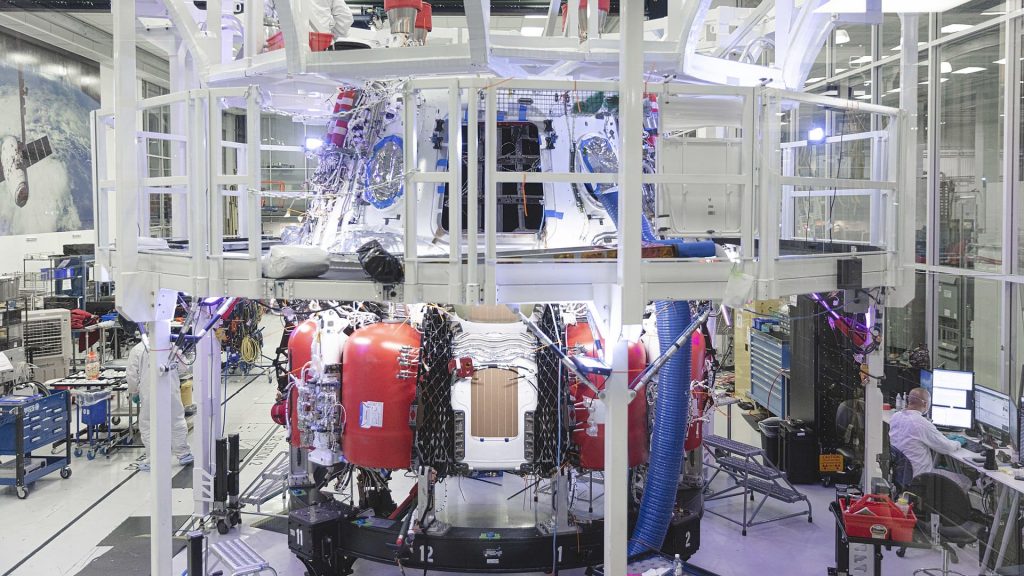
SuperDracos
The sibling to the Draco, as the prefix suggests, produces an extremely high amount of thrust. This is necessitated by their primary function as abort motors, meaning they are responsible for pulling the crew away to safety in the event of a failure on the pad, or on ascent.

(The capsule has 8 Superdracos evenly distributed in four clusters of two. ) caption
Why don’t they use the SuperDracos to deorbit?
Primarily, this is due to the high thrust of the SuperDracos, which would make for a very short deorbit burn. The 15-minute-long burn would only last 5 seconds if the SuperDracos were used in place of the Dracos.
The long burn time allows for precise adjustments, which is critical when it comes to re-entry corridors. If the craft were to reenter at too shallow an angle, it would bounce off the atmosphere. Conversely, if the re-entry angle were too steep, the heat flux would overwhelm the heatshield, and the deceleration forces would cause the breakup of the craft.
Secondly, the SuperDracos would be much less efficient than the Draco thrusters. Due to their nature as abort motors, they are optimised for atmospheric operations, whereas the Dracos have a larger nozzle for use in the vacuum of space.
Could the SuperDracos be used as a backup for the parachutes?
Physically, yes, they could be used as a last resort. After all, the precursor to the capsule, Red Dragon, planned to use the SuperDracos to land – leaving chutes as a backup.
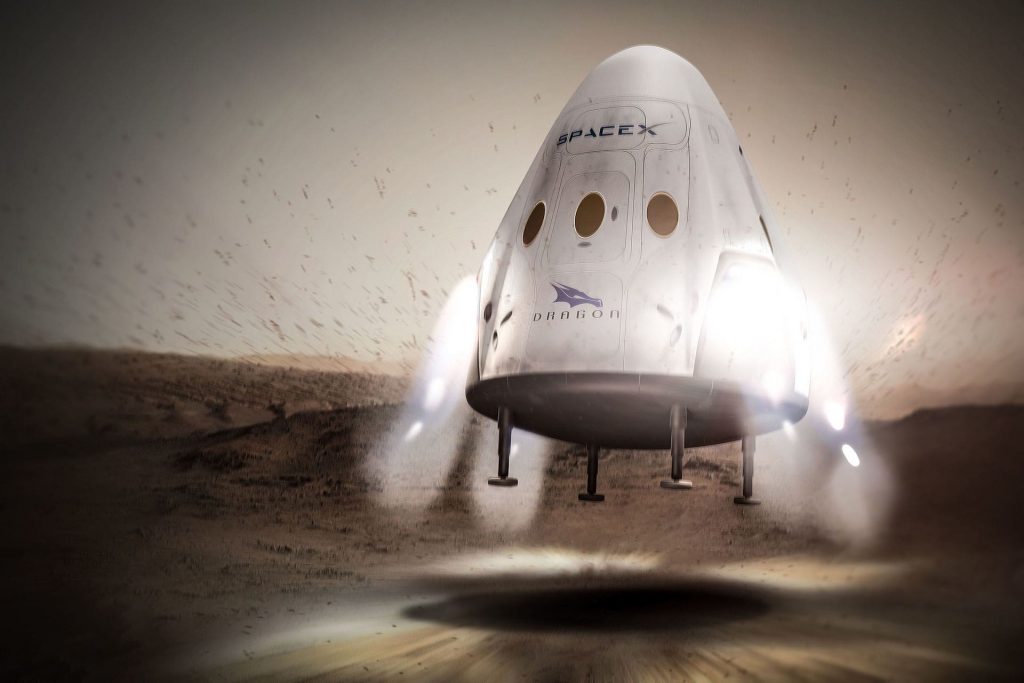
However, it proved a nightmare to certify them for the fringe use case. Arming the system during descent and writing the lines of code for when they might need to be used created more problems than solutions.
SpaceX ceded that engineering time would instead be better spent ensuring the reliability of the parachutes.
Heat Shield
Heat shields are a cool – or rather, hot – piece of technology. They are a relatively simple solution to an extreme problem. The problem being when a spacecraft reenters the atmosphere 10 times faster than a bullet, it must cope with temperatures half as hot as the surface of the sun.
What causes re-entry heating?
You may have assumed it’s air friction that causes the heat on re-entry, but it’s not that, it’s just extremely compressed gas.
Spacecraft coming in at orbital velocity are travelling very fast (a minimum of 28,000 km/h). At this speed, air molecules can’t get out the way fast enough and become squeezed between the oncoming airstream and the blunt bottom of the spacecraft.
Due to a thermodynamic phenomenon known as adiabatic heating, when a gas is compressed, it heats up.
What causes communications blackouts?
Plasma is formed when air molecules get so hot that they begin to dissociate – breaking down into their constituent ions and electrons.
This forms a plasma sheath, which acts as a Faraday cage around the vehicle—blocking all but the lowest wavelength transmissions.
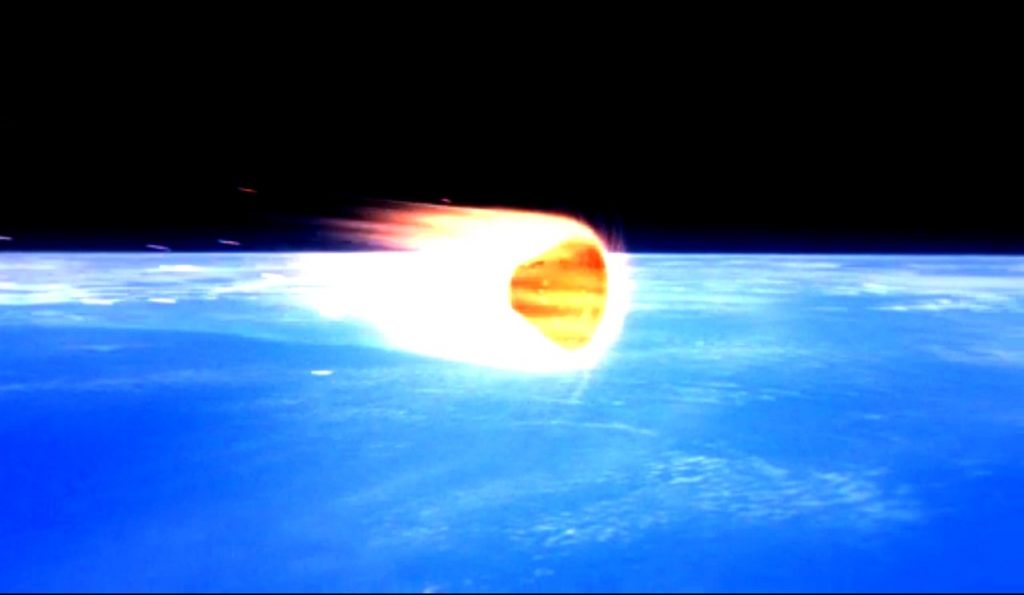
Unlike its precursor, Crew Dragon will experience a 6-minute communications blackout during the most intense part of re-entry.
The Space Shuttle, on the other hand, maintained a signal via NASA’s Tracking and Data Relay Satellites (TDRS). However, this only was possible due to its unique spaceplane shape.
Why do most capsules look the same?
You’ll notice most capsules have that same blunt bottom design. This is, of course, no coincidence. This was a groundbreaking discovery for NASA when designing the first crewed vehicle, the Mercury Capsule. The Soviet Union came to a similar conclusion by the time they designed their Soyuz Capsule – after moving away from a mostly spherical shape, found on their previous Vostok and Voskhod vehicles.
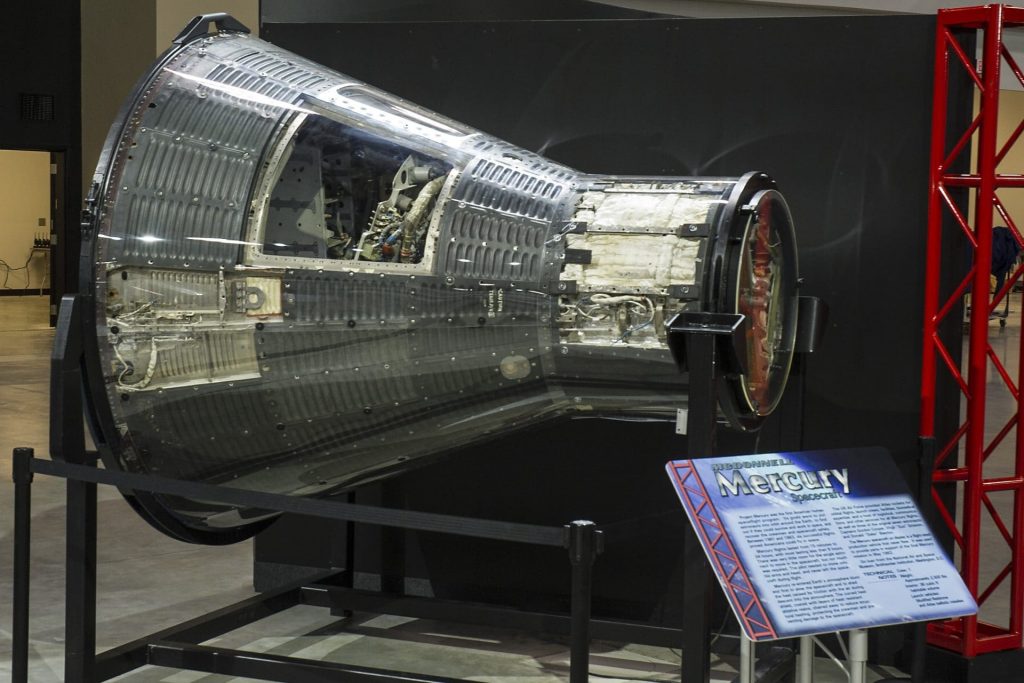
Due to its tapered shape, the design is inherently stable and will always point heatshield first. Crucially, by creating a large bow shock, it prevents the hot plasma from attaching to the sides of the spacecraft, and it can help create a survivable deceleration.
How do heatshields work?
Most heat shields, the Dragon Capsule included, use an ablative material. These work by ablating, or flaking away, as they heat up. Thereby taking some of the heat away with them. -Meaning, you could even use wood as a heat shield.
Both the old and new Dragons use PICA-X, which is SpaceX’s variant of the NASA designed Phenolic Impregnated Carbon Ablator. The material, engineered in the ’90s, has been used on Mars missions and the Orion spacecraft.

SpaceX’s iteration should allow for the same heat shield to be reused up to ten times. However, their design has yet to be used more than three times.
How can heat shields be used to steer?
The heat shield, in conjunction with the thrusters, can precisely steer the spacecraft through re-entry.
Dragon is engineered such that the centre of mass is offset, allowing for the heat shield to produce lift. Through careful control, the lift generated can be exploited to guide the vehicle.
By rotating the spacecraft, the lifting vector changes. Therefore, if turned in one direction, Dragon pulls up from the normal vector. Conversely, if rotated 180 degrees, it will pull down deeper into the atmosphere.
[KSP PIC]
(By controlling this small amount of lift, they can extremely accurate when it comes to hitting the splashdown zone. -caption)
I, for one, find it counter-intuitive to think that a blunt bottom, circular heat shield provides lift.
Parachutes
The final, and perhaps most important, piece to the puzzle is the parachutes. After all, without chutes, an otherwise successful mission would certainly lead to the loss of craft and crew.
Parachutes, although they seem a simple technology, have proven to be one of the most challenging components. You’d think such an old field would be completely explored by now.
Parachute Problems
NASA and its commercial partners, Boeing and SpaceX, through rigorous testing and certification for the Commercial Crew Program, found new errors and failure modes.
As NASA administrator Jim Bridenstine mentioned in a 2019 interview I had with him: “We were taking risks with other parachutes that we did not know we were taking… because we have done testing, we now know what we didn’t know before.”

Mk3 Chutes
It took SpaceX about 100 tests and three generations of chutes to certify them completely. The most recent, inventively designated Mk3, managed to pass the stringent safety requirements.
The Mark 3 design itself went through 27 drop tests before it was considered safe for human use. As a result of the huge testing campaign, SpaceX now has one of the safest and most reliable parachutes ever made.

The biggest challenge posed to parachutes is their very narrow window of operation. If you’re going too fast and try to deploy a chute, the airstream can destroy the canopy, rip the lines or their attachment points to the canopy.
SpaceX started using Zylon, a unique polymer developed by researchers at Stanford University, in place of the nylon previously used in the parachute risers. The risers, which attach the canopy lines to the capsule, had to be bolstered when a load modelling inaccuracy proved that they did not meet the human safety factor of 1.4.

After all, as the chutes initially deploy and reef open, there can be very big shocks. The trick is developing a chute that deploys slowly and smoothly, doesn’t tangle, and most importantly, doesn’t fall apart.
How does Crew Dragon land?
At an altitude of 2 km, Crew Dragon deploys its four main parachutes. The vehicle has undergone “parachute out” testing, meaning it can safely splashdown under only three chutes. This is quite the change from the original Dragon capsule, which only had three chutes to begin with.

But all these systems have to work in unison for a successful mission. If the shape of the capsule were designed wrong, it wouldn’t slow down enough in the upper atmosphere, and its terminal velocity could be much higher. Resulting in harsher deployment conditions for the parachutes or less time for them to deploy fully.
It’s the entire system that makes re-entry safe, not just any one particular component. The depth of thought that has to go into each and every aspect of the vehicle to safely return from orbit is amazing.
The Orbital Mechanics of re-entry
It takes a huge rocket to get a spacecraft into orbit, and it’d take a rocket of almost the same size to get back if you had to slow down without the aid of the atmosphere.
What’s the difference between orbit and space?
To go to space, you go up. But to stay in space and avoid coming back down, you need to go sideways – fast. On Earth, that number is about 28,000 km/h – or orbital velocity.
How do you deorbit?
And now because there’s all this velocity, we can’t just slam on the brakes and drop straight down from space and right onto our target. Instead what you do is perform a deorbit burn on the opposite side of the planet from your landing area. This slowly lowers the lowest point, or perigee, of your orbit into the upper atmosphere.
In fact, you only really need to scrub off a few per cent of your velocity in order to lower your orbit enough. It’s a relatively low energy maneuver – the atmosphere does most of the work.
Why do orbits phase?
Returning from an equatorial orbit, if you were trying to land on the equator, you’d have an opportunity to land every single orbit – which equates to about every 90 minutes on Earth.
However, if you’re not landing on the equator and the inclination of your orbit is greater than 0, you’ll only cross that point on Earth twice a day.
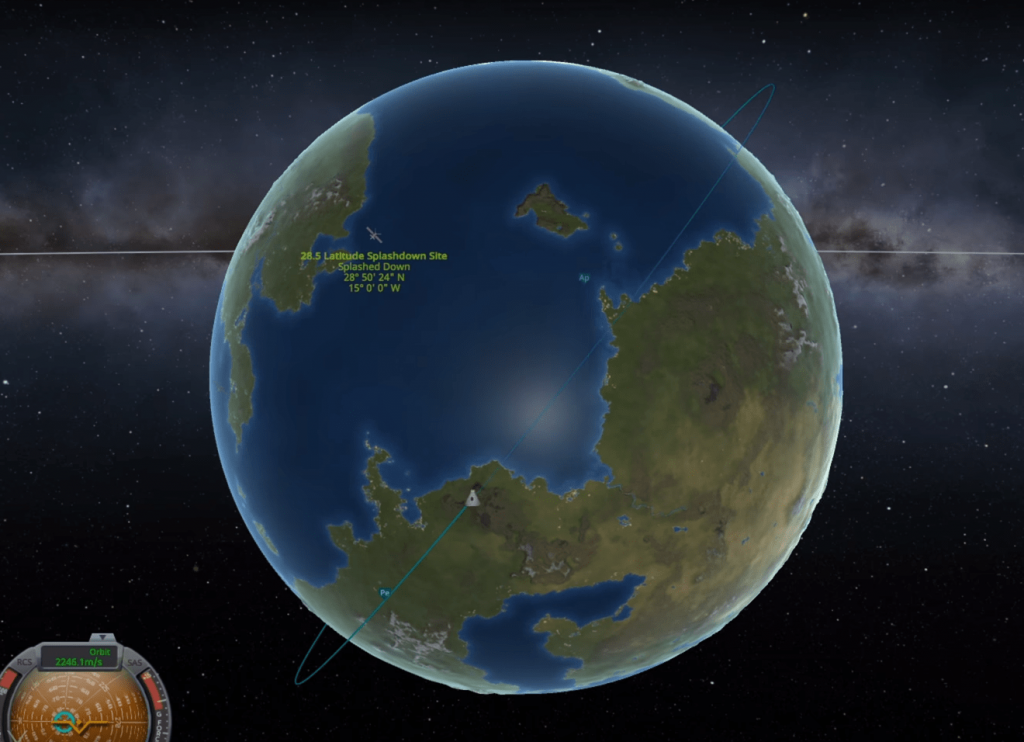
In the case of Crew Dragon returning from the 51.6° inclination of the International Space Station, it’ll land near Kennedy Space Center. Because KSC is about 28.5 degrees north, its orbital path will cross over the Space Center twice a day: once travelling from NW to SE, and roughly 12 hours later, travelling SW to NE – or once ascending and once descending.
This is why there’s such a range in times between undocking and splashdown. In effect, you’re hitting a moving target, and you’re also a moving target! So it’s not so much that you deorbit when you’re exactly opposite side of the Earth. Instead, you deorbit when you’re opposite of where your landing zone will be – since the Earth is always rotating below.

Conclusion
Orbital mechanics are awesome, aren’t they? I love all the stuff that goes into this. Like all rocket science, there’s an incredible amount of thought and engineering involved in quite literally every millimeter of a vehicle, as well as a lot of science that goes hand in hand with each second of re-entry.
It’s stuff like this that makes me not only appreciate the work being done today to keep astronauts safe, but it especially highlights the skills of the early engineers – who figured out most of this stuff in the ’50s! It’s astonishing!
What do you think?
How about you, did we answer all your questions about how you get back from orbit? Do you have a better understanding of all the interesting physics involved? Let me know your thoughts and questions in the comments below!
DM-2
If you want to find out more about the actual mission that ferried Bob and Doug up to the International Space Station, check out our Prelaunch Preview for DM-2.





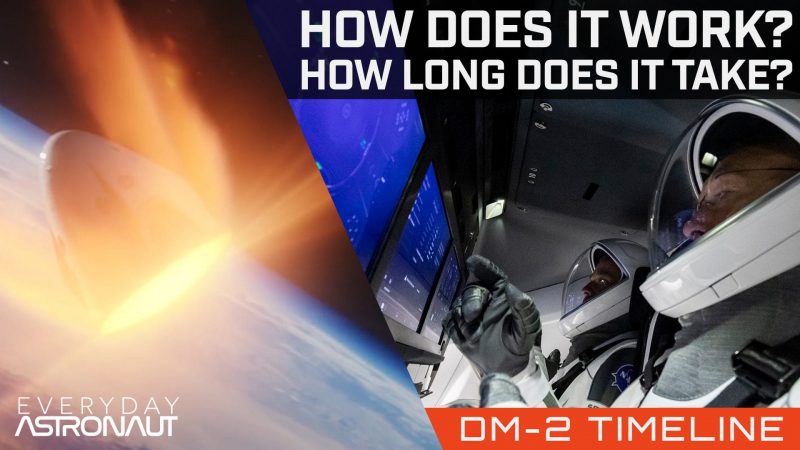
Very useful !
Will the Soyuz spacecraft return the same way as The Dragon by splashing down in the ocean ?
Thank you for this clear explanation. Can you go over the orbital mechanics of how the capsule clears the station after undocking and how they move relative to each other ?
What was the ground track of the Dragon-2 crew capsule once it reached an altitude of 400,000 feet MSL? Track in latitude and longitude pairs with a citation of the altitude for each pair.
This was a NASA mission (No FAA license issued). However, future crew reentry missions will be commercial and require a FAA/AST license and the capsule may Not over-fly any populated areas. I find it hard to believe that a FAA licensed reentry would ever be permitted to overfly Florida and attempt to land in the Atlantic Ocean near Daytona as that was one of the several “back-up” landing sites for this NASA mission.
It is important to understand the reentry and landing constraints of a FAA/AST commercially licensed reentry. By knowing the lat/lon ground track with altitude call-out then we can all better appreciate the limited options SpaceX will have in the future. Thank you.
Thank You! Great overview!!
Great overview but one thing: you missed a picture after: “By rotating the spacecraft, the lifting vector changes. Therefore, if turned in one direction, Dragon pulls up from the normal vector. Conversely, if rotated 180 degrees, it will pull down deeper into the atmosphere.”
Thanks!!
So a what-if question. Let’s say the Dragon leaves the station to get ready to de-orbit. If there were a problem or weather was bad for an extended amount of time can they get back to the space station and stay for a while before trying again?
Author Andy Zach here. I’m writing a book about teen superheroes who return from space in a dragon capsule. This is exactly the information I need! Thanks!
I subscribe to everyday astronaut on Youtube, so when this came up in my search results, I pounced on it.